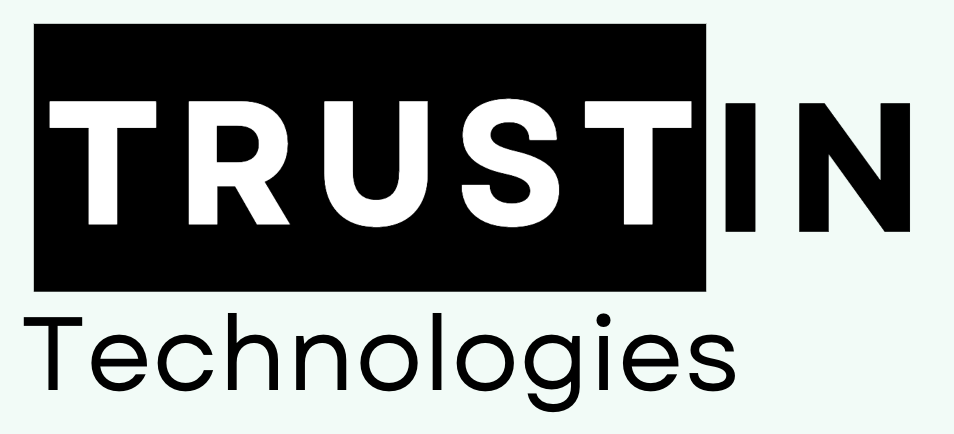Understanding Your Vision: Requirements Gathering
Before embarking on the development journey of a web or mobile application, it is crucial to thoroughly understand the project vision and requirements. This foundational step is where Trustin Technologies excels, guiding clients through the complexities of defining their goals and objectives. By engaging in a collaborative approach, Trustin Technologies helps ensure that the initial vision aligns with the technical capabilities and market realities.
The first step in effective requirements gathering is identifying the target audience. Understanding who will use the application is fundamental to tailoring its features and functionality. Trustin Technologies facilitates this process through detailed discussions, allowing clients to articulate their user expectations and market demands. This collective effort ensures that the project not only meets client expectations but also resonates with future users.
In addition to identifying the audience, Trustin Technologies employs various techniques to ensure comprehensive requirements collection. Workshops are an effective strategy, allowing clients and stakeholders to brainstorm and visualize their ideas in real time. This interactive setting fosters creativity and can lead to discovering features that may not have been apparent initially.
Interviews present another pivotal opportunity for gathering specific insights. One-on-one discussions with key stakeholders enable in-depth explorations of their expectations, priorities, and concerns. By asking pointed questions, Trustin Technologies can capture nuanced requirements that are critical for successful development.
Additionally, questionnaires serve as a structured way to gather information from a broader audience. By distributing well-crafted surveys, Trustin Technologies can collect quantifiable data that supports decision-making processes, ensuring that all voices are considered.
Through these methods—workshops, interviews, and questionnaires—Trustin Technologies empowers clients to clearly articulate their vision. This step is indispensable, laying the groundwork for a successful application that aligns with business objectives and user needs.
Fine-Tuning Your Concept: Design and Prototyping
Refining your initial idea is a crucial stage in the development process, where design and prototyping play vital roles in transforming concepts into tangible solutions. This phase involves creating wireframes that serve as a blueprint, outlining the structure and elements of the application. Wireframes help clarify functionality and provide a visual representation, which is essential for evaluating the layout and flow of the application before diving deeper into the design process.
Next, focus on developing the User Interface (UI) and User Experience (UX) designs. UI pertains to the aesthetic aspects of the application, including colors, typography, and overall visual appeal, while UX emphasizes the user’s journey and ease of interaction with the application. A well-designed UI enhances user satisfaction, making it easier for them to navigate and engage with the application. Conversely, an optimal UX ensures that users can achieve their goals efficiently, leading to a more successful application in the competitive market.
Trustin Technologies collaborates closely with you during this critical phase, utilizing design iterations to refine your concept. Their expertise enables the identification of potential issues early in the design process, allowing for comprehensive adjustments based on user feedback. Gathering and incorporating user feedback at each stage is paramount; it informs necessary changes that elevate the usability and functionality of the final product.
To facilitate effective prototyping, various tools are available, such as Sketch, Figma, or Adobe XD, which allow for creating interactive prototypes that simulate the end-user experience. Best practices involve integrating an iterative approach to design and prototyping, ensuring that your application continues to evolve according to user needs and expectations. Ultimately, this systematic fine-tuning guarantees a user-friendly application that resonates with your target audience, setting the stage for a successful launch.
Execution Phase: Development and Testing
The execution phase of a project, particularly in software development, is critical as it merges both creativity and technical expertise. During this phase, Trustin Technologies employs a detailed approach that encompasses both front-end and back-end development processes to ensure a cohesive and functional product. By utilizing agile methodologies, the team can adapt to changes rapidly, facilitating collaboration among developers, designers, and stakeholders. This iterative model supports constant communication, allowing teams to refine ideas and deliver continuous updates on the project’s status. As a result, client feedback is integrated promptly, enhancing the end product based on real-world usability.
Front-end development focuses on the user interface and user experience, ensuring that the application is not only visually appealing but also intuitive and responsive. Technologies such as HTML, CSS, and JavaScript are essential in crafting interactive elements that engage users while providing seamless navigation across various devices. On the back-end, Trustin Technologies utilizes robust languages and frameworks to manage server-side logic, database interactions, and application performance, crucial for ensuring stability and efficiency.
Quality assurance and continuous testing are integral to the development phase. By implementing automated testing environments and regular code reviews, issues can be identified and addressed at an early stage, which significantly reduces the risk of costly revisions later. Trustin Technologies places a strong emphasis on maintaining high performance and security standards throughout the development cycle. This includes rigorous testing for vulnerabilities and performance bottlenecks. The process involves performance testing, security assessments, and user acceptance testing, all aimed at ensuring the product not only meets but exceeds industry benchmarks. Ultimately, this dynamic approach to development and testing lays the groundwork for a reliable and effective final product, tailored to the client’s needs.
Deployment and Scaling: Launching Your Application
Launching your web or mobile application marks a significant milestone in the development process. A successful deployment requires careful planning and execution, focusing on both immediate launch needs and long-term scalability. Firstly, selecting the right platform for deployment is crucial. Cloud service providers such as Amazon Web Services, Microsoft Azure, and Google Cloud offer flexibility, reliability, and the tools necessary for managing your application’s server configuration.
Once the deployment environment has been established, the next step is to configure the server settings tailored to the specific requirements of your application. This includes determining the necessary computing resources, database configurations, and security protocols. A well-structured architecture enables your application to perform efficiently under varying loads. With a cloud infrastructure, scaling your application becomes seamless; you can automatically adjust resources based on real-time user traffic, ensuring optimal performance without manual intervention.
Post-launch, monitoring becomes essential for understanding user interaction and identifying any potential issues. Tools such as New Relic or Google Analytics can aid in tracking performance metrics and user behavior, helping developers implement timely updates and enhancements. Regular monitoring ensures that your application can handle millions of users effectively, minimizing downtime and maximizing user satisfaction. Additionally, it is important to have a robust strategy for deploying updates. This could include using continuous integration and continuous deployment (CI/CD) pipelines to facilitate efficient and frequent releases that improve your application’s functionality without disrupting the user experience.
In conclusion, effective deployment and scaling involve meticulous planning, leveraging cloud technologies, and applying best practices for monitoring and updating your application. By following these steps, your application will not only launch successfully but also adapt to the evolving demands of your user base. Trustin Technologies stands ready to assist you in navigating this critical phase, ensuring a successful application lifecycle.


Leave a Reply